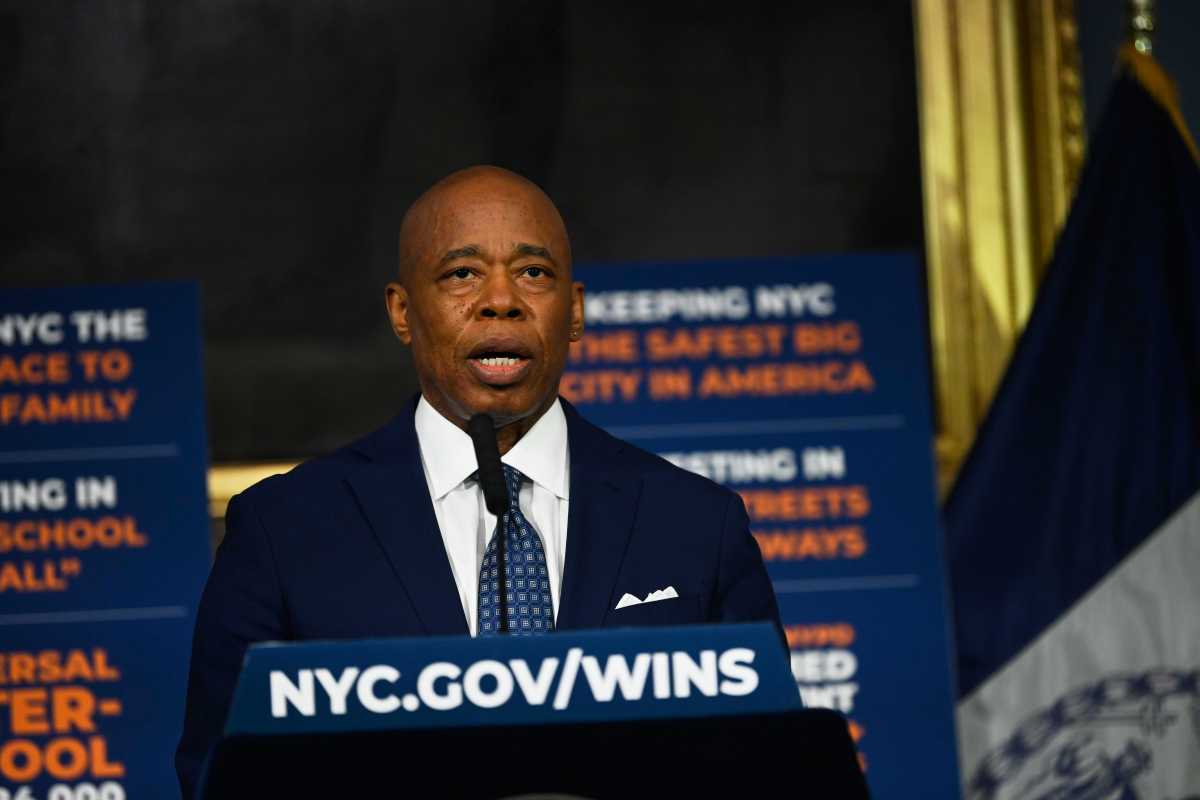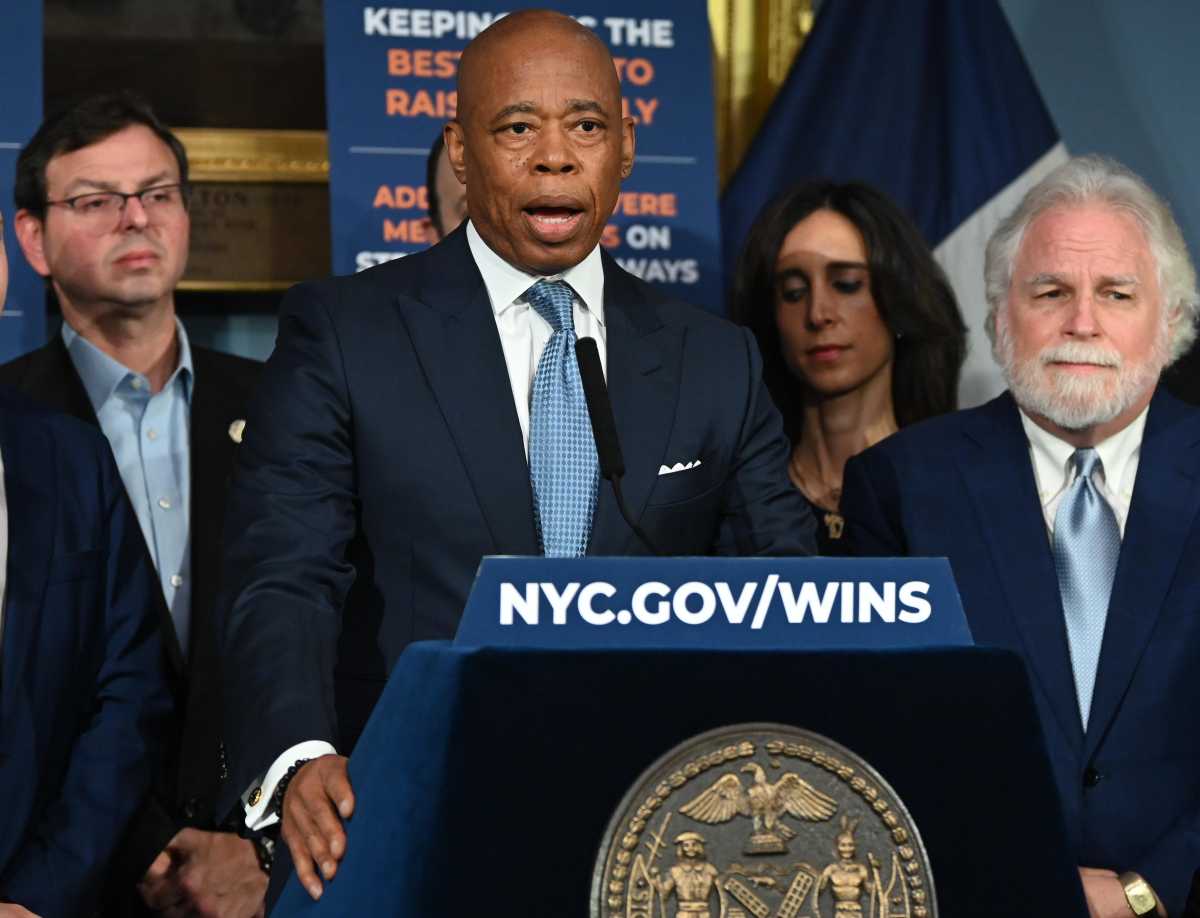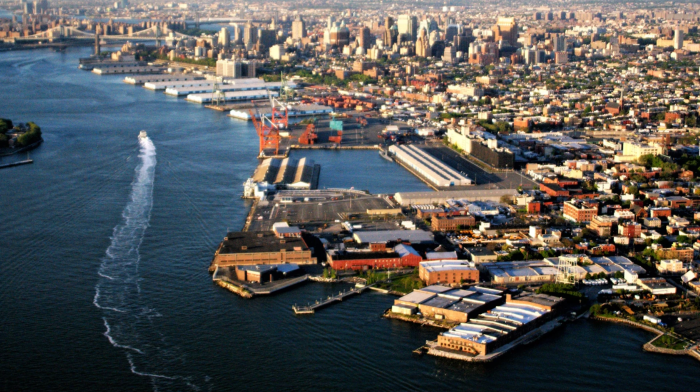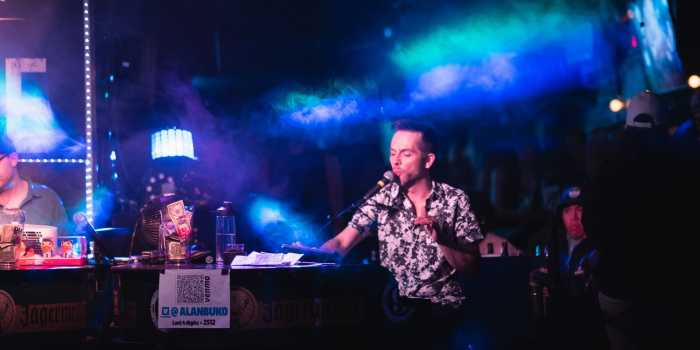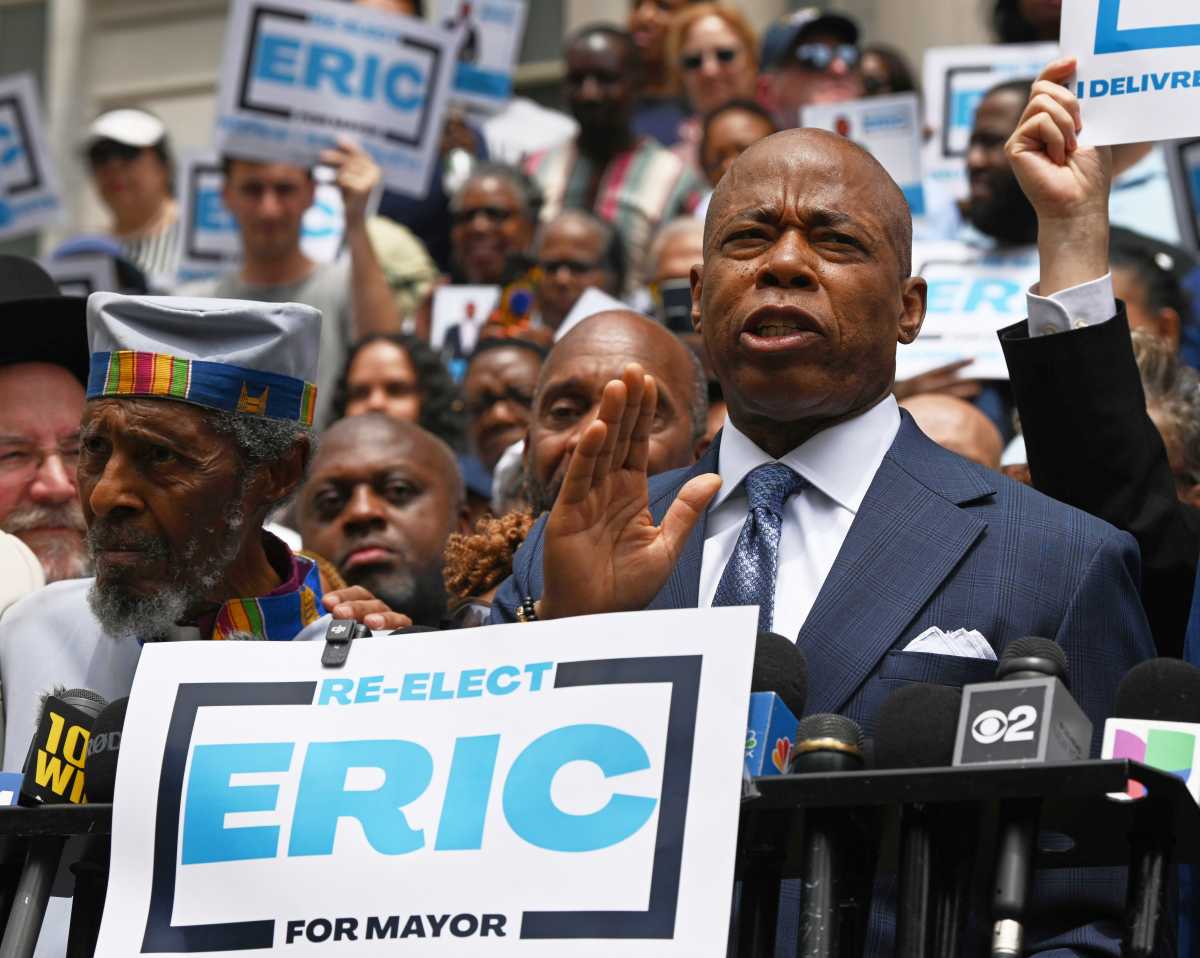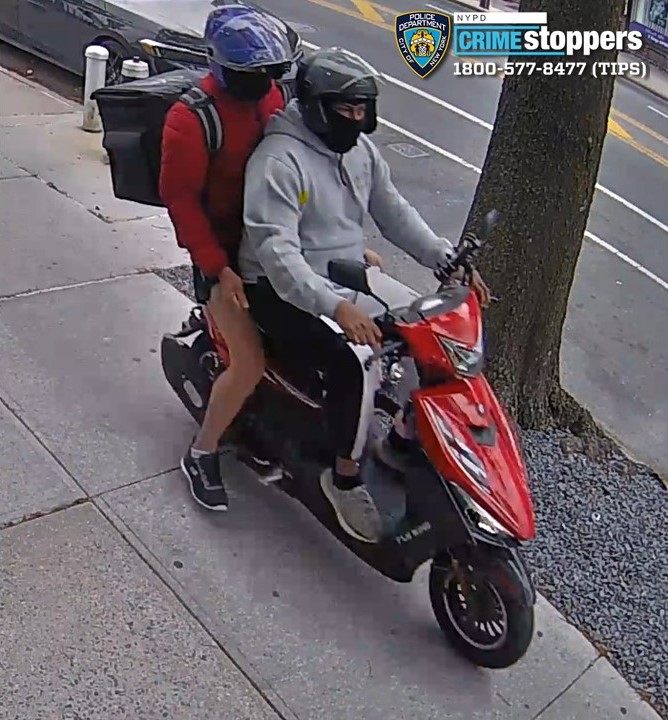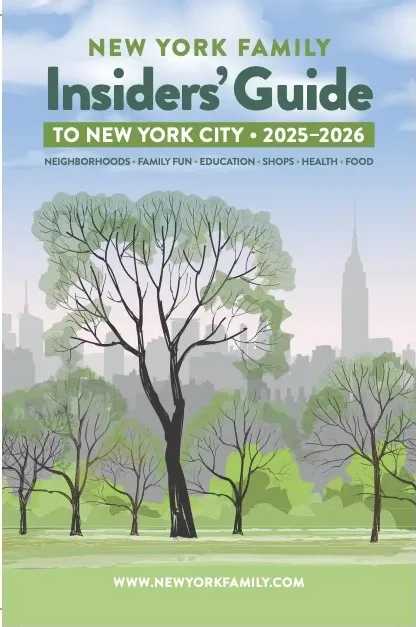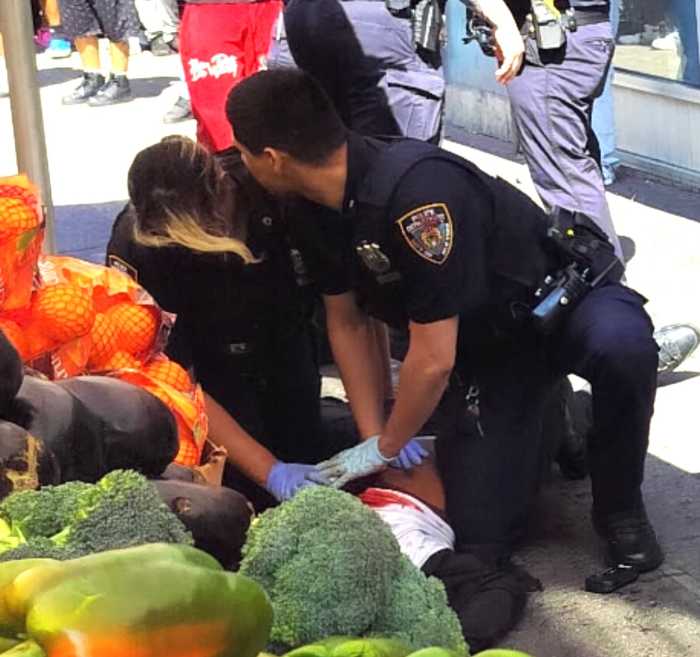To the editor,
Thank you for your front-page timetable of five years of Forest City Ratner’s efforts to gain control of 22 acres of Brooklyn real estate (“Atlantic Yards at five: What went wrong,” Dec. 13).
Of course, after five years we know there is no reason to believe this is over yet. Mayor Bloomberg is getting a shot at staying on, while Gov. Paterson and the daily papers remain silently complicit.
For now, Forest City’s treading water makes good sense. Come January or February, the feds will make stimulus money available to the states, creating an opportunity for the Atlantic Yards promotional team to pronounce that Atlantic Yards is a shovel-ready project with jobs, jobs, jobs and more jobs.
Forest City’s demolition created blight and stopping work on the Carlton Avenue Bridge only makes Borough President Markowitz and Forest City’s argument that much more convincing. Still denying federal financing for this project would be more consistent with what President-elect Obama meant when he spoke of government from the ground up.
Atlantic Yards has always been a top-down, developer-driven project. Opposition to Atlantic Yards, on the other hand, is very much the story of community organizing; of individuals, community groups, blogs, The Brooklyn Paper and local electeds attempting to get the state and the developer to take community concerns into account.
Beyond the legal and legislative efforts, Atlantic Yards is a test of government that makes sense, and in a wider sense, government that acts ethically. So for the foreseeable future the community will continue to work to prevent another developer- driven, back-room deal that moves money to preferred players at the expense of Brooklyn’s long-term benefit.
Alan Rosner, Prospect Heights
Mean streets
To the editor,
Thanks for your coverage of the “clown” bike ride on Kent Avenue (“A bunch of clowns,” Dec. 20). But the reporting on the issue was strikingly one-sided. If there are so many people who are supporting the bike lanes, where are they?
Williamsburg is part of a global city, which saw a 36-percent increase in biking last year. Biking and bike activism is on the rise citywide. These are the people who pushed for the new bike lanes as part of the Bloomberg comprehensive plan for the city.
This increase in biking represents a vision of sustainable city independent of cars or polluting transportation. Biking, not car driving, increases health.
The Kent Avenue bike lane is part of the solution for a global city of residents with many more positions than represented in your one-sided piece. Indeed, who are the real clowns: those who wear funny hats and support practical solutions to a congested city’s health and environmental problems or those with their heads in the sand who adhere to the narrow interests of a small cohort of residents who care of little about the city but their own parking spaces?
Benjamin Shepard,
Carroll Gardens
• • •
To the editor,
Street design shouldn’t be dictated by who shouts the loudest. And it certainly shouldn’t come down to scoring political points. Both the proposed greenway and existing bike lane are the products of a strong community process and we should let that process unfold without injecting election year politics.
Bike lanes in South Williamsburg have had a tough time. Back in 2005, part of the proposed Berry Street bike lane was successfully blocked by residents who didn’t want bicyclists on their streets, even though this lane had no impact whatsoever on the street’s traffic or parking capacity. Emotion prevailed, and it took more than two years before North Brooklyn — the densest biking community in the city — received its next bike lane. We paid the price with traffic-related injuries in the interim.
Wiley Norvell, Greenpoint
On the run
To the editor,
Thanks for your coverage of my early work to reach out to the community in next year’s campaign for City Council (“They’re off! Council candidates start making their pitch,” Dec. 20).
But far from having held “behind the scenes fundraisers,” I’ve been meeting hundreds of people throughout the 39th Council district. More than 75 people have already hosted dozens of house parties, inviting their friends and neighbors to meet me in their living rooms, with nearly 500 people attending.
As co-chair of the Community Board 6 Housing and Human Services Committee, I’ve chaired or testified at public hearings on Long Island College Hospital, the Gowanus Canal and East Windsor Terrace rezonings, PS 160, affordable housing issues, and the proposed restructuring of senior citizen programs.
I’m grateful to have had the opportunity, early in my campaign, to work with so many people throughout our community, and to learn what’s important to them.
I believe that local government can still work — but only if politicians listen to those they are supposed to represent. That’s why getting started early is so important.
Brad Lander, Park Slope
The writer is a candidate for the City Council seat occupied by Bill DeBlasio (D–Park Slope).
Taking a ‘Toll’
To the editor,
I am a resident and a father of three children residing in Carroll Gardens approximately one block from the Gowanus Canal. Over the last year, we have witnessed the serious imbalance between the concerns of my community and the interests of local officials. Let’s be clear, development is not the issue. The issue is safety.
Broadly, community development is based on mutual respect between residents and government. The proposed Toll Brothers development (“To-Toll victory for Gowanus project,” Nov. 22) on the Gowanus this year is a betrayal of our safety. We all have access to the reports: Department of Environmental Conservation, Columbia University, Army Corps of Engineers, and the Federal Emergency Management Agency. They all echo similar dangerous warnings.
I suppose my greatest disappointment is not that my elected representatives have turned a blind eye to my family’s safety, but that they have decided to seek the short term gains at the expense of those vested in my neighborhood. Recent history — from Freddie Mac to Citibank to Bernie Madoff — shows how leadership has failed public trust. We all were lulled that our management and government representatives would do the right thing.
But the Gowanus will be whitewashed, and its core will hold a deathly time bomb under our pillows. When the chips fall, we look at the victims and pity them while forgiving the sins of those responsible. So the primary question for me is “who will take responsibility for this risk when it happens?” There are more than 50 pathogens in the canal. Any disturbance will elevate the levels of toxicity and risk of exposure to nearby residents (including my family, friends and neighbors).
Until there is a cleanup, natural remediation is the most effective alternative. Any proposed development should take second consideration to these cleanup requirements.
Kevin Duffy-Acevedo,
Carroll Gardens


